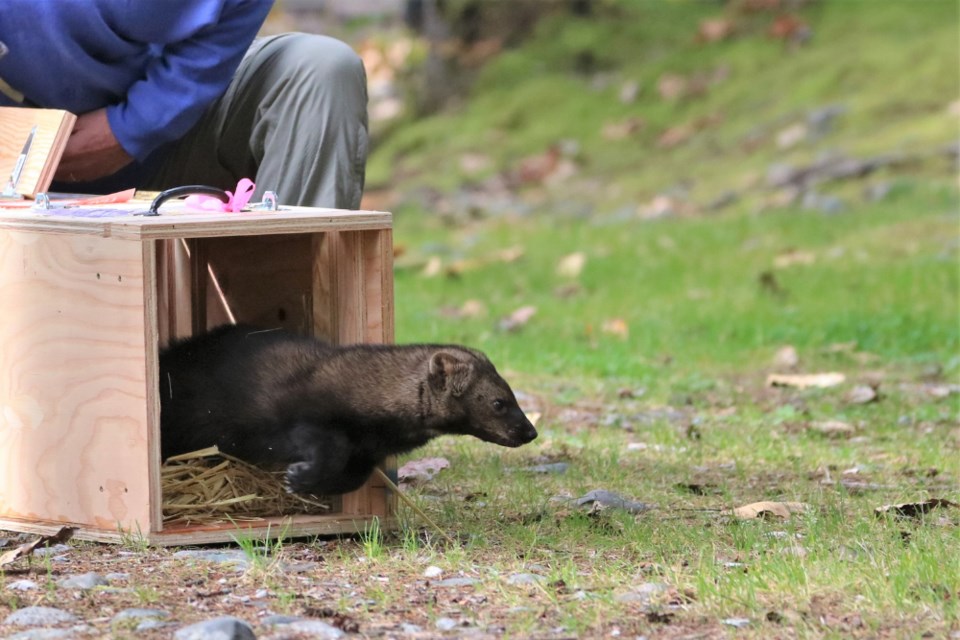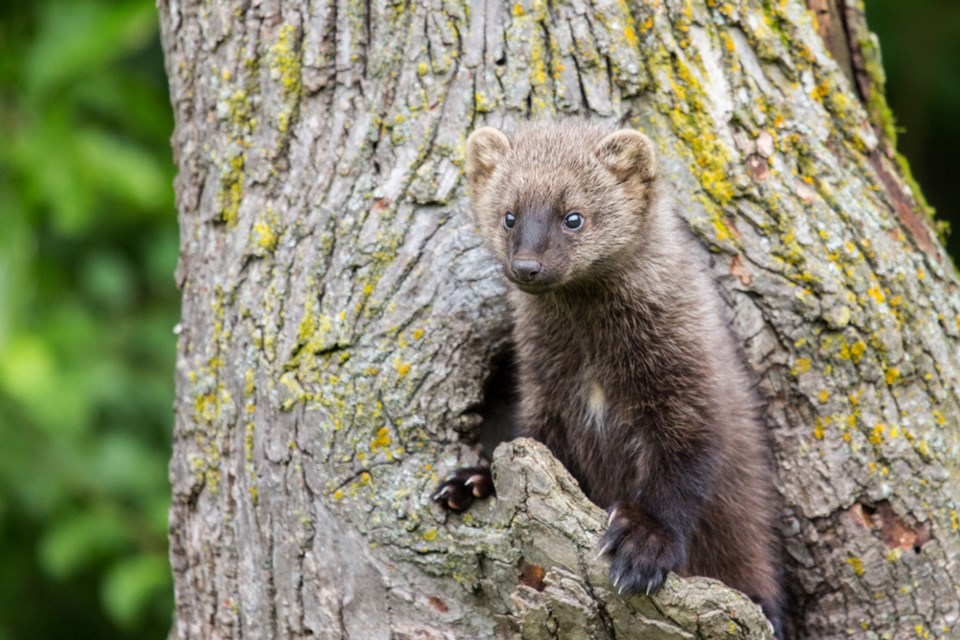Once lost from the state of Washington, the elusive fisher is again making their home in the dense coniferous forests of their historic range.
The Wilder Institute has been supporting their U.S. partners including the Washington Department of Fish and Wildlife, National Park Service, and Conservation Northwest in this critical work through conservation translocations and research.
A member of the weasel family, the fisher is a remarkable animal that had disappeared from Washington State by the mid-1900s due to factors including over-trapping, predator control campaigns and habitat loss.
Largely solitary, fishers grow to about the size of a house cat and are found across Canada’s boreal forest. Usually dark brown in colour and primarily nocturnal, fishers feed on small mammals, birds, reptiles and berries — but despite their name, do not eat fish.
Since 2015, 170 fishers have been released into Washington’s Cascade Mountain Range from Canada and those populations are beginning to re-establish themselves. Wild births from fishers translocated from Canada were documented within two years of release.
The Wilder Institute supported the translocation of almost 90 fishers from northern Alberta to Washington. They are also working with their U.S. partners to investigate how the observed physical and behavioural characteristics of individual fishers under human care may impact their success after release.

For this research, fishers were brought to the Wilder Institute from northern Alberta and were studied for between one and three weeks before they were released to Washington. The data collected during this period will be used to inform future decisions on determining suitable release candidates for subsequent translocations.
“Because these animals are wild-born, we want to get them back out into the wild as soon as we can, because that would be best for everyone involved,” explains Wilder Institute conservation research population ecologist, Danica Stark.
Stark notes that once the fishers have had a chance to settle in to their new temporary home, the process begins with a physical check to ensure the fishers are healthy or if medical attention is needed. Biological samples and body measurements are collected and may be able to provide insight on stress hormone levels, such as how those levels may change over their time at the Wilder Institute and if those levels can be correlated to certain behaviours observed during that period.
Video cameras were also used to focus on the fishers’ behaviour to determine which traits could help identify who would be ideal candidates for release: curiosity, boldness and other factors are closely monitored in this process.
“We are looking at things like how curious they were and some exploration behaviours: how they behave in a new environment, how they behave if given new, novel objects that they haven’t seen before, how long it takes them to consume their new food and how bold or fearful they behaved,” Stark says.
“An individual that is bold and curious might do better when they’re released in a new environment because they’re able to explore things a little bit more than an individual that is timid and scared. But at the same time, an individual that’s too bold might have some negative consequences when it’s released because it may not know when to hide once it’s released into this new environment.”

The ultimate goal of this physical trait and behavioural analysis is to determine whether certain traits are correlated with increased survival and reproduction after release. If a correlation is found, researchers could then assess the behavioural and/or physiological traits of fishers to determine whether an animal is a good release candidate, leading to an increase in the success rate for translocations.
It’s hoped that by developing an automated system, the Wilder Institute can quickly identify specific behaviours that will determine which animals can be used in subsequent translocation efforts without needing to keep them in the facility longer than necessary.
“Ideally, we want to characterize some key behaviours and develop a tool to determine the temperament of these fishers that could be used to identify suitable candidates for future release,” Stark says.
To support the Wilder Institute’s innovative conservation programs, visit wilderinstitute.org/take-action.



